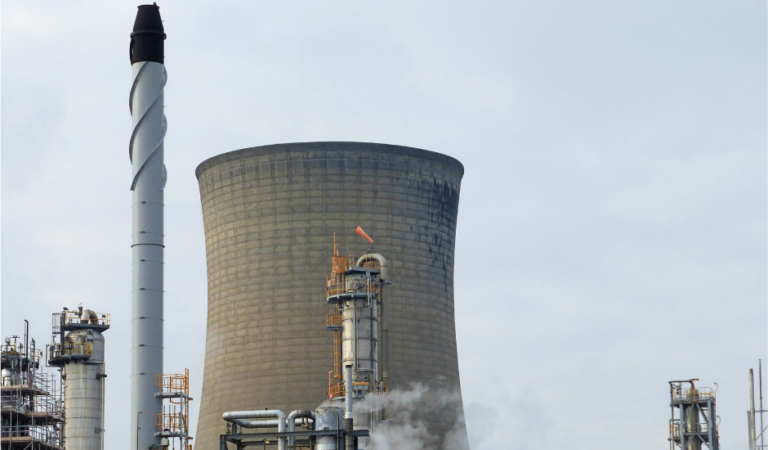 7th November 2022
7th November 2022How Do You Treat Cooling Towers?
Water treatment is necessary for cooling towers to maintain a secure, dependable, and effective system.
If you manage a cooling tower, you might be thinking about water treatment choices to raise the system’s cleanliness, durability, and effectiveness. Determining which option is ideal for you can be difficult, though, because every system is different.
It is advisable to consult with an authority in water treatment, but you can also benefit from preparing yourself by conducting your own study.
This article intends to educate anyone with an interest in cooling water towers on the fundamentals of cooling tower water treatment.
What is a Cooling Tower Treatment System?
Basically, your cooling tower water treatment system filters out contaminants from the water feed, the water circulation, and the blowdown water that goes into your cooling tower.
Cooling tower water treatment systems are efficient due to their adaptability. You can select a treatment option suitable for working in your system regardless of the construction of your water tower. There are options which are influenced by elements such as water quality in your area, the cooling method your tower works by, or the materials it’s made of.
How Does the Treatment System Work?
If properly implemented, a mix of chemical treatments and filtration technologies can assist in preserving the quality of the water that is in the cooling tower. And it can help to lower levels of corrosion and scale whilst limiting bacterial growth.
However, a cooling tower maintenance programme cannot be effective just off water treatment alone. Treatment for cooling towers also requires manual cleaning and disinfection of all towers.
Filtration
Some of the most common treatment methods for cooling towers include filtration systems.
Filters might take the form of bags or rows of mesh screens. Water is passed through spaces which progressively get smaller throughout the filtration process. Every filter has gaps, starting from the largest to, eventually, the smallest gaps.
Essentially, it’s just like sieving except instead of getting out the lumps, you’re removing large particles that are contaminating the water. Particles such as rust, sediment, and organic compounds.
The only problem is… some particles are smaller than the smallest of gaps, so they slip right through. Which is why there is a secondary system: ultrafiltration. This system of filters is quite restrictive so the pollutants that originally passed through end up trapped the second time around.
Water pH
Makeup water is the replacement water when the cooling tower loses water from evaporation, bleeding, and leaks. There are multiple sources in which water can be drawn from, like city water, water from a well, and even surface water.
The amount of water required will depend on how pure your water is and how much makeup water is put into the system overall. To prevent corrosion, you might need to soften or alter the hardness of the water, balance the pH, and do routine bacterial volume tests.
Mineral Content of Water
The lifespan and effectiveness of your cooling tower can be significantly impacted by water hardness, which is the mineral content of the water. Particularly the presence of magnesium, calcium, and iron minerals.
Softening the water is usually the step to take and this is done by, most times, using a resin. Your water’s quality will increase as a result of doing this without any dangerous by-products being added.
Adding Chemicals
Acidity is eliminated by corrosion inhibitors like bicarbonates. And biocides or algaecides stop biofilms and other types of organic growth.
To inhibit scale, sometimes phosphoric acid can be added.
Blowdown Treatment
Blowdowns are a necessary aspect of cooling tower maintenance. This is a technique for removing water from a system that has collected high levels of minerals or pollutants. The used water is then disposed of and replenished with freshwater.
Even after the water has been cleaned, some cooling towers employ other techniques, such as water recycling or reverse osmosis. De-mineral action is frequently done to eliminate impurities that could re-enter the water throughout the treatment process.
Cooling Tower Cleaning
Cleaning the system itself is one of the most neglected steps in the water treatment of cooling towers. Your system’s water may become contaminated or susceptible to Legionella bacteria if suitable cleaning services aren’t applied.
Before starting the system, it is crucial to ensure that the tower is cleaned properly and maintained regularly.
Cooling Tower Experts
We are frequently asked to conduct site inspections and provide a plan for renovating cooling towers with corroded or damaged surfaces. This is frequently caused by the initial coating delaminating and deterioration.
Often, this results in the surfaces beginning to leak and exhibiting poor chemical resistance. Untreated cooling tower sludge and scale can encourage the growth of bacteria and cause legionnaires’ disease.
Cooling tower repair jobs are something that the CWS team has a lot of expertise with. Our clients will receive an estimate and project plan that is more trustworthy and accurate thanks to our knowledge and experience.
Give us a call on 01943 872 311 to discuss your choice or to receive a quote for a cooling tower repair. Our team will be happy to help you with any worries you have regarding your cooling tower.
You can also reach out to us via email at info@coldwaterstorage.co.uk.